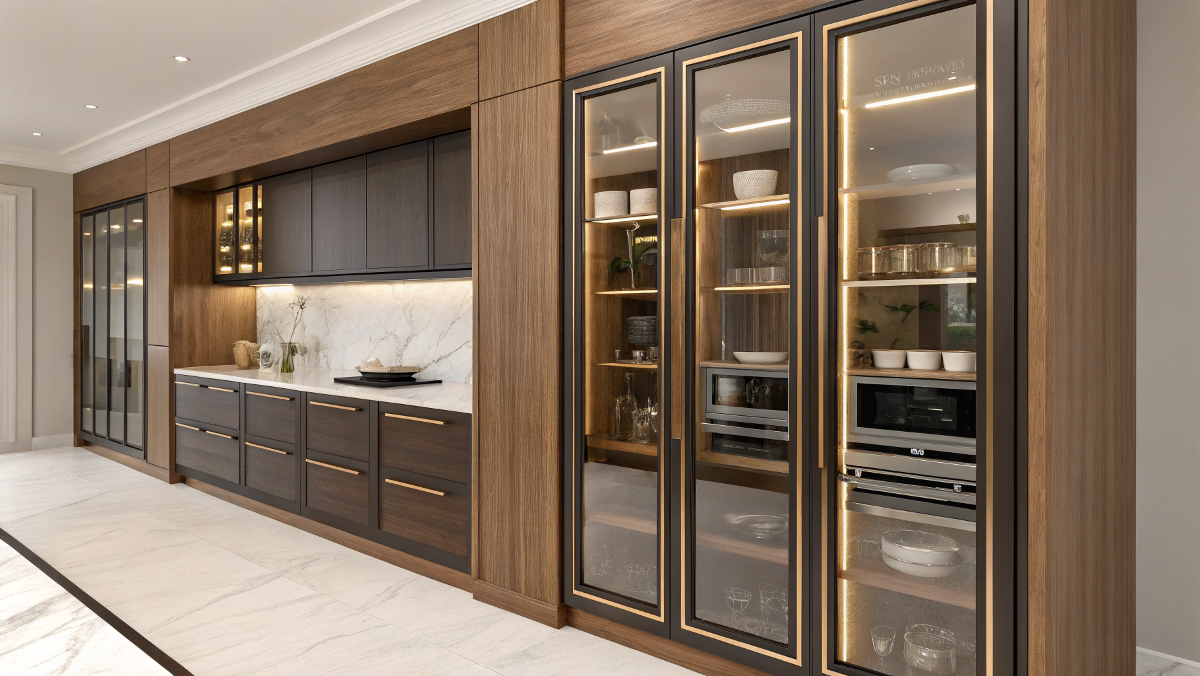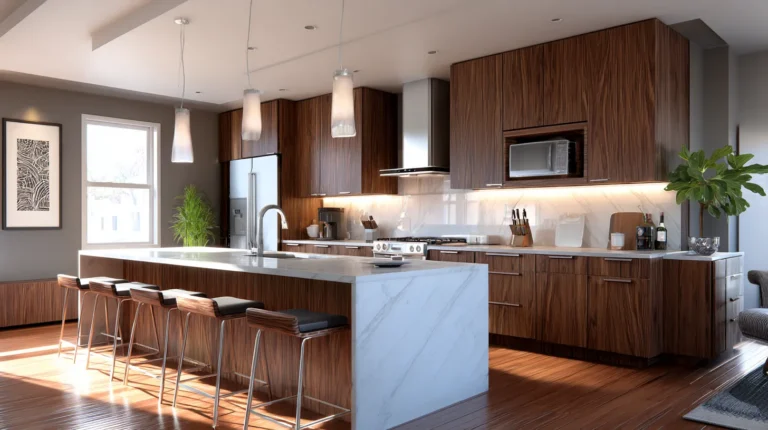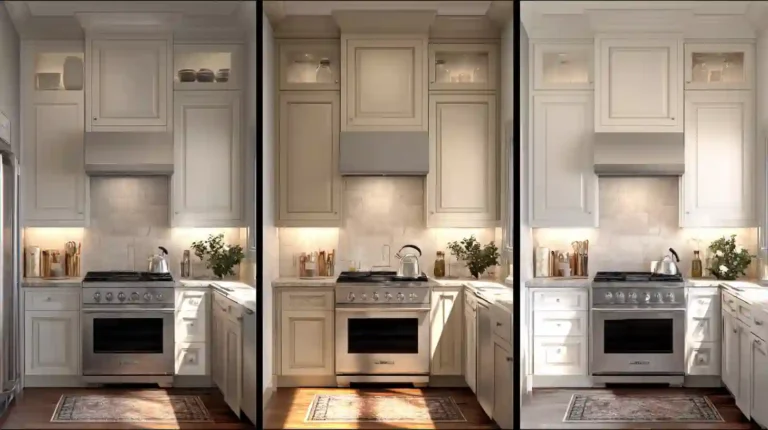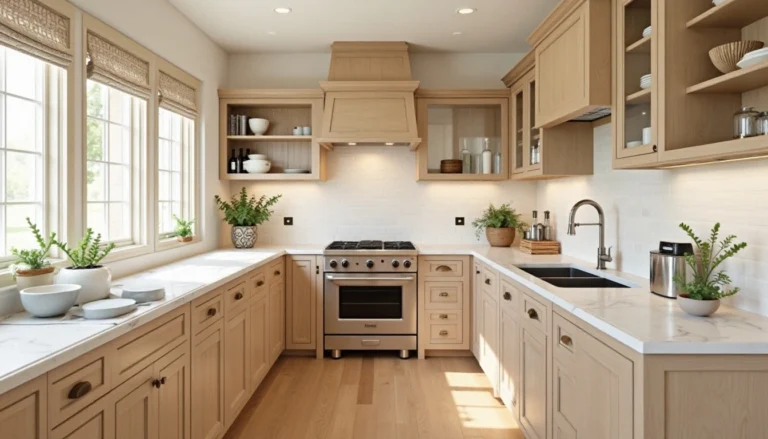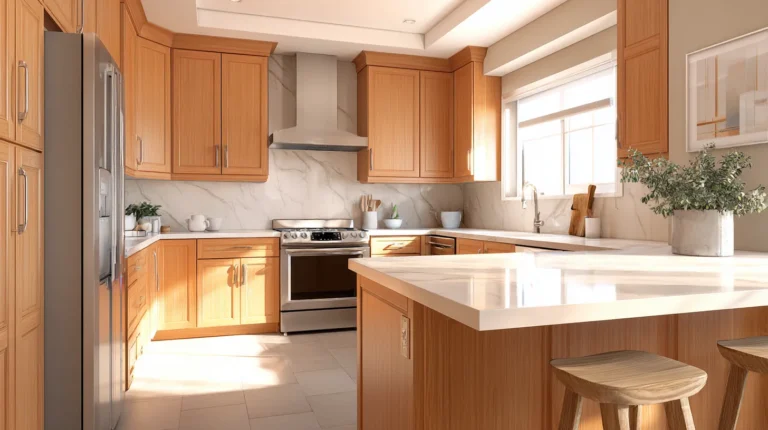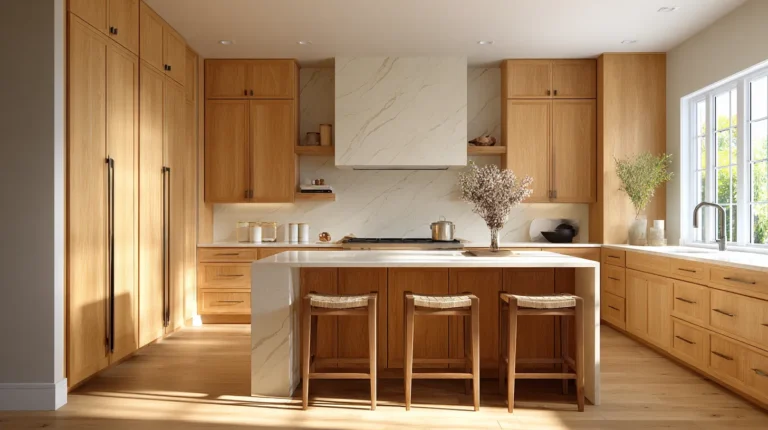Modern Framed Cabinets Ideas You’ll Love
I still remember the first time I noticed framed cabinets, not in a fancy showroom, but in my grandma’s kitchen, where the drawers always stuck a little and the flour lived in a dented tin by the stove. Those cabinets had character. They had that little lip around the edges (the “face frame,” I’d later learn), and every smudge and scratch told a story. At the time, I just thought they looked… homey. Safe. Like a warm hug in wood form.
Fast-forward a few years and a few renovation disasters (let’s not talk about the time I measured the drawer fronts upside-down), and guess what style I still lean toward? Yep, framed cabinets. There’s something about that sturdy little border that makes everything feel grounded. Like, if your kids slam the doors, which they will, these cabinets can handle it.
So if you’re standing in your kitchen right now, wondering whether framed cabinets are too “old-school” for your style, or if they’re secretly the timeless choice your future self will thank you for, pull up a chair. I’ve tried both styles. Made mistakes with both. But framed cabinets? They’ve got this charm that just doesn’t quit.
In this article, I’ll walk you through:
-
What framed cabinets are (in normal-people language),
-
Why do they work so well in busy, lived-in homes?
-
A few things to look out for (because yes, there are trade-offs),
-
And how you can get the look without blowing your budget.
Framed cabinets are a traditional cabinet style featuring a face frame, a visible wood border on the front of the cabinet box, which adds structural strength and a classic look. Common in Shaker and inset designs, framed cabinets offer easier installation on uneven walls and durable support for doors and drawers. While they reduce interior space slightly compared to frameless options, they remain a popular choice for their charm, flexibility, and long-term reliability.
Why I Keep Coming Back to Framed Cabinets Even After Trying the Trendy Ones
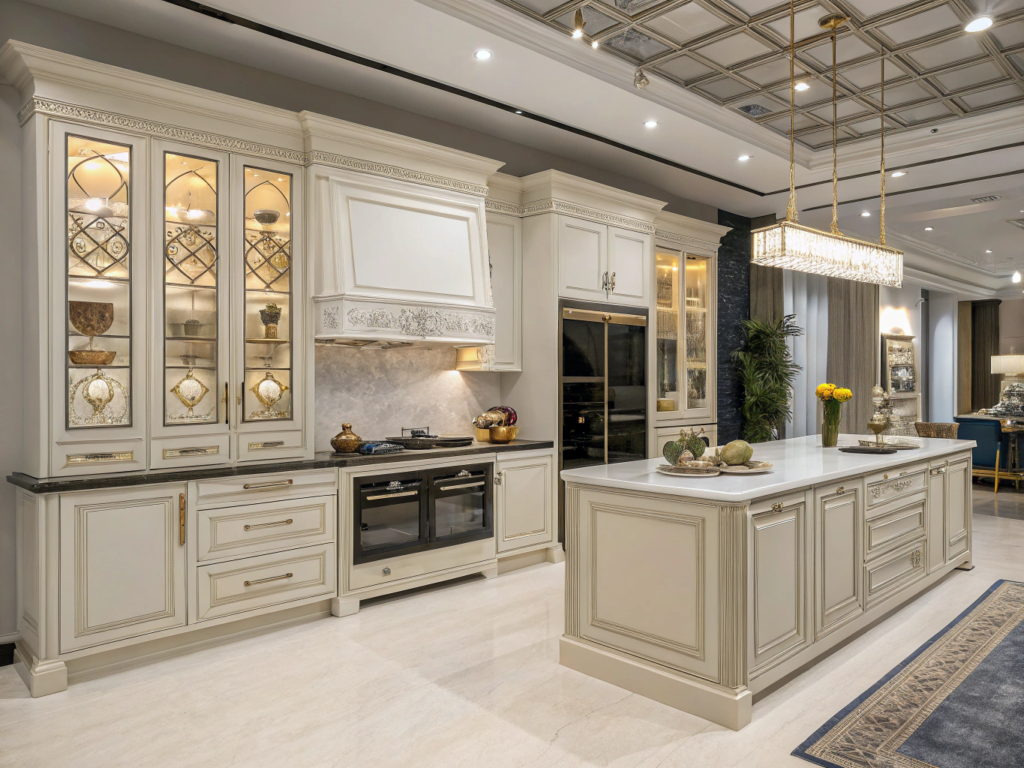
I’ll be honest: the first time I chose framed cabinets, it wasn’t because I knew what I was doing. It was because they were on sale at a local warehouse, and the sales guy said, “These are the kind your grandma probably had.” Sold. (Also, I didn’t realize at the time that frameless didn’t mean the doors were missing. Rookie moment.)
But here’s what I learned: framed cabinets are the workhorses of the kitchen world. That face frame, that little border of wood around the cabinet opening? It’s not just for looks. It keeps the cabinet box sturdier and more forgiving when your walls aren’t exactly plumb (mine aren’t, thanks, 1950s construction).
And when I say sturdy, I mean my 5-year-old tried to climb one like a jungle gym, and it held strong. Not proud, just… impressed.
Real Talk, They’re Just Easier to Work With
If you’re DIY-ing your way through a kitchen redo (like me, with a drill that dies halfway through every project), framed cabinets give you a little grace. They help disguise uneven gaps, and the frames make it easier to align doors, especially when you’re adjusting hinges for the third time and wondering if you measured anything right. (Hint: I didn’t.)
They also give you options. You can go:
-
Inset (super traditional, very “cottage-core,” but harder to get perfect),
-
Partial overlay (a bit of the frame peeks out, classic and cozy),
-
Or full overlay (covers almost everything, so you get that sleeker look without giving up the frame strength underneath).
So, Who Are Framed Cabinets Best For?
Honestly? You’ll love framed cabinets if:
-
You’re working with older walls that aren’t exactly level
-
You like that homey, “been here a while” feeling
-
You want cabinet doors that stay where you put them
-
You’re okay giving up a smidge of drawer space for structure (we’ll talk more about that in the next section)
Do Framed Cabinets Look Too Traditional?
Not if you don’t want them to. Full-overlay framed cabinets can look super modern, especially if you go with flat-panel or slab doors. But if you’re into shaker doors and cozy vibes (guilty), framed gives you more flexibility with style. You don’t have to live in a farmhouse to appreciate good bones.
What You Give Up With Framed Cabinets That No One Warned Me About

Let me tell you about the time I tried to install a pull-out tray in one of my framed cabinets and discovered, halfway through drilling, that the opening was an inch narrower than I expected. Why? That lovely little face frame I’d been raving about? It steals space. Not tons. But enough to make you say some words you wouldn’t use around your kids.
Here’s the deal: framed cabinets do cut into your interior space a bit, especially when you’ve got center stiles (that vertical piece of wood running down the middle). They make the cabinet stronger, sure, but they also make it harder to reach that pan you shoved in the back. I’ve banged my hand on the frame more times than I’d like to admit.
The Hidden Downsides Nobody Tells You
-
Reduced drawer width: You might lose 1–3 inches of space compared to frameless. Doesn’t sound like much… until you’re trying to squeeze in your oversized colander.
-
More parts = more alignment drama: Inset doors need precision. Like, laser-level patience. (Which I do not have.)
-
Harder to clean inside: That frame lip? Crumbs love it. Dust too. If you’re a clean freak, you’ll need to keep a small brush handy.
Real talk: if your kitchen is teeny-tiny, those few inches might matter. I didn’t realize how much until I tried to store my mixer in a lower cabinet, and it just wouldn’t fit by this much. I ended up moving it to the pantry, which was fine… until the toddler found it.
So… Are Framed Cabinets a Bad Idea?
Not at all. Just be aware of the trade-offs. If space is your top priority and you like a super streamlined look, you might lean toward frameless. But if you value charm, durability, and doors that can withstand a few hits (or even a dozen), a framed door is still a solid pick.
Also, if you’re a fellow fan of “organization baskets” from the dollar aisle (hi, me too), just measure carefully. The frame cuts a little off the entry space, which might mean your cute bins don’t slide in as easily. Learned that the hard way.
How to Style Framed Cabinets Without Making Them Look Dated
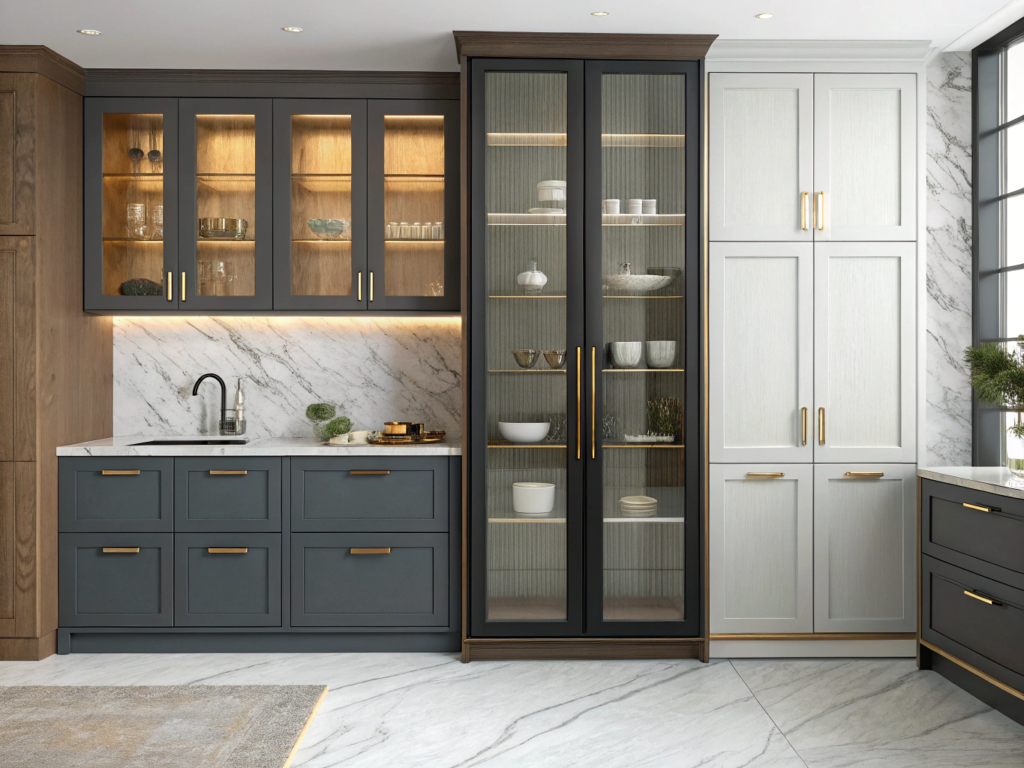
I’ll admit: I used to think framed cabinets were kind of… grandma-ish. (No offense to my grandma, she made a mean banana bread, and her cabinets were rock solid.) But when I redid our kitchen, I realized framed doesn’t have to mean fussy or outdated. It just needs the right styling.
And guess what? With a little paint, some clever hardware, and a few Saturday afternoons, you can take those “meh” face-frame cabinets and make them feel fresh, modern, and totally you, without gutting the whole kitchen.
Quick Styling Wins That Work
-
Go Shaker, Stay Sane
Shaker doors are like the jeans of cabinet styles, classic, flattering, and they go with everything. Framed shaker cabinets strike a perfect balance between traditional and modern styles. I painted mine a soft sage green and added matte black pulls (found on Amazon, $28 for a 10-pack!), boom: instant upgrade. -
Play With Color
You don’t have to stick with wood tones. Try a creamy white, deep navy, or even a dusty blush if you’re feeling bold. (I saw a blush pink framed cabinet on Pinterest and haven’t stopped thinking about it since.) -
Mix and Match Hardware
Swapping knobs for cup pulls or adding a mix of finishes can modernize the whole look. Just promise me you’ll measure first. I once drilled all the holes for my new hardware upside down. Still haunts me. -
Lose the Clutter
The structure of framed cabinets already gives definition. Keep things simple on the counters—think one pretty plant, a wooden cutting board, and your favorite coffee mug. Clean lines = clean vibes.
My Framed Cabinet Glow-Up and a $12.99 Surprise
Last summer, I found these brushed brass knobs at Lowe’s on clearance, $12.99 for a 10-pack. I wasn’t sure at first (they felt a little too shiny), but I put them on one drawer, stepped back, and said out loud, “Oh… that’s cute.” My husband thought I was talking to him. Nope, just admiring the knobs.
I paired them with a matching faucet, and suddenly, my old oak-framed cabinets looked intentional. Like I meant for them to be there all along.
Can Framed Cabinets Look Modern?
Absolutely. It’s all in the finish. Try flat-panel doors with full overlay, go for bold paint (black is having a moment), and use minimal hardware. Add a slab backsplash or open shelving, and you’ve got a whole vibe.
What Materials Make the Best Framed Cabinets, And What to Watch Out For
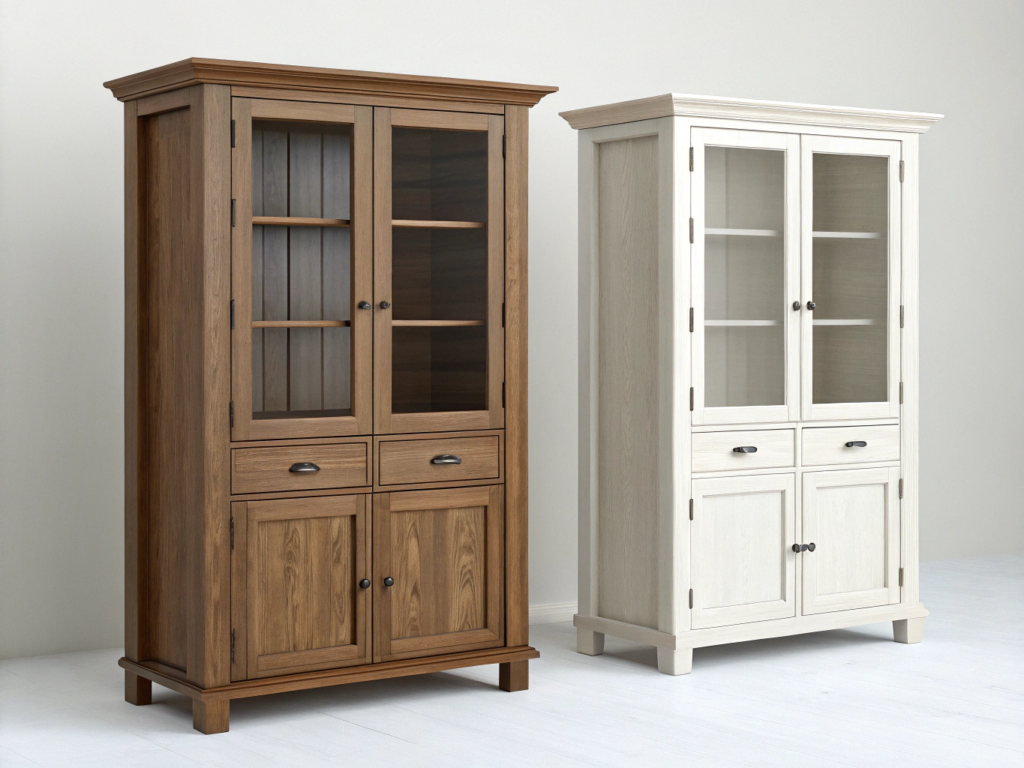
Here’s something I wish someone had shouted at me in Aisle 14: not all “wood” cabinets are wood. I learned that the hard way after tapping on a door sample and realizing it sounded… hollow. (Spoiler: MDF core, thin veneer front. Looked nice for about two months.
If you’re investing in framed cabinets, the material matters a lot. That sweet little face frame? It’s what holds everything together. And while you don’t have to go full custom walnut to get quality, there are a few red flags and gold-star materials to know about.
The Big Three Cabinet Materials (and My Take on Each)
-
Solid Wood (usually hardwood like maple, oak, or birch)
- Super strong and can handle decades of use and abuse.
-
Takes paint or stain beautifully.
-
It can get pricey, but worth it for cabinet fronts and frames.
-
My current lower cabinets are solid maple and have survived juice spills, drawer slams, and one ill-advised crayon attack.
- Plywood
-
Great for the cabinet box, strong, light, and resists warping.
-
Middle-tier pricing, but solid performance.
-
Tip: Look for “furniture-grade” plywood for durability.
-
-
MDF (Medium-Density Fiberboard)
-
Smooth and great for painted finishes (no grain).
-
Not a fan of near sinks, swells if it gets wet.
-
Cheaper option, but best used for panels or doors, not frames.
-
I had one MDF cabinet face bubble after a mop incident. Never again near the floor.
-
What to Watch Out For: Trust Me, I’ve Been There
-
Particleboard boxes: Tempting price-wise, but not worth the sagging shelves and split screw holes.
-
Thin veneers over MDF: Pretty now, peel-y later.
-
“Paint-ready” claims: Always ask what that means. Some brands cut corners and give you something closer to paperboard.
Pro tip from the guy at Home Depot (who knows me by name at this point): tap the wood. If it sounds dense and solid, it usually is. If it sounds like a cereal box… keep walking.
What’s the Best Combo for Framed Cabinets?
If budget allows: solid wood frame + plywood box = solid, paintable, long-lasting.
If you’re pinching pennies, MDF door fronts are fine, just keep them away from moisture zones.
Framed vs. Frameless Cabinets: My Two-Cabinet Life
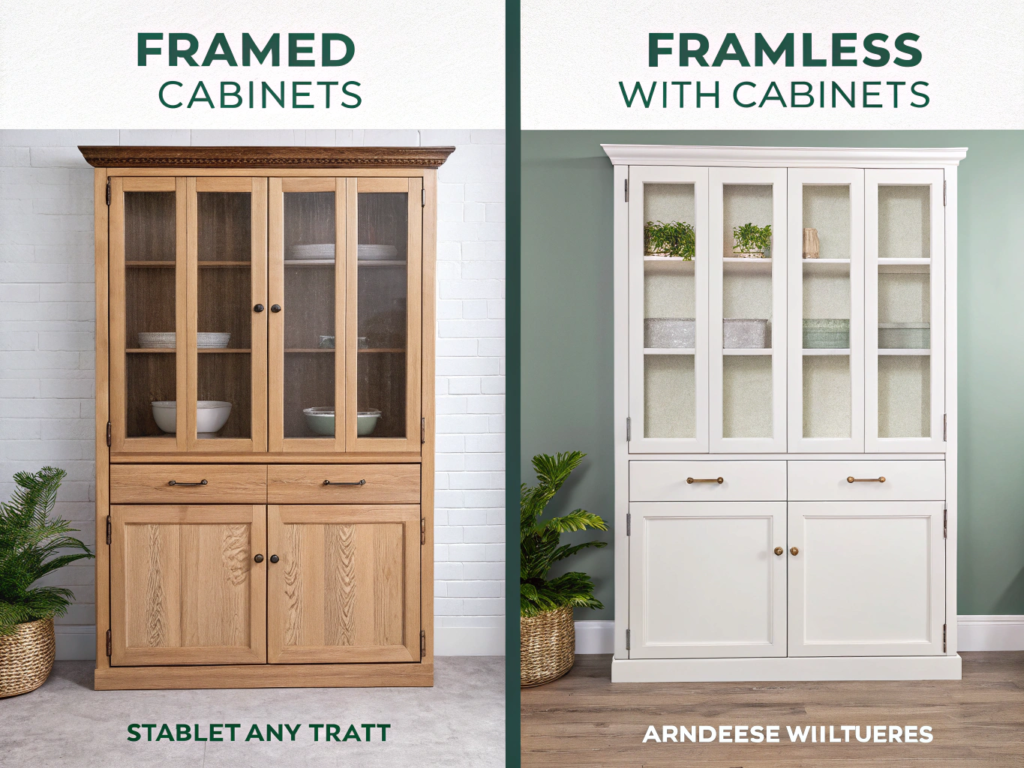
Here’s the truth: I didn’t even know frameless cabinets were “a thing” until my neighbor Linda redid her kitchen and casually dropped the phrase like we were on HGTV. At the time, I was wrestling a sticky drawer out of my framed cabinets and thinking, “Wait, mine have frames?”
So if you’re feeling confused, welcome to the club, let me break it down the same way I explained it to my husband, with cereal boxes.
Think of It Like This…
-
Framed cabinets are like shoeboxes with a lid that slightly overlaps the sides. That little border gives them structure, makes them sturdier, and covers up some imperfections (like the not-quite-straight back wall in my house).
-
Frameless cabinets are like stacking cereal boxes next to each other. You get full access inside, no border, very clean lines, but everything has to line up just right, or it shows.
I had a frameless in our rental. They looked sleek until one hinge loosened, and suddenly the door sagged like a sad eyebrow. With framed, I can slam, yank, and nudge, and it still holds up. (Not that I’m recommending slamming… but toddlers happen.)
Where Framed Cabinets Win for Me
-
They’re forgiving. I don’t mean emotionally, but that would be nice. I mean, when your house isn’t perfect (like when the floor slopes just a bit), framed cabinets help hide that.
-
They feel homey. Even painted black or navy, there’s a warmth. A familiarity.
-
You can get playful. I’ve mixed partial overlay doors with inset drawers before; it looked intentional (even if it started as a mistake).
And yeah, you lose a bit of space inside. I’ve had to turn a few pans sideways to get them in. But unless you’re storing a turkey fryer in every drawer, it’s a fair trade.
So Which One Should I Pick?
It depends on your vibe. Want clean, modern, and don’t mind measuring 12 times before drilling once? Go frameless. Want cozy charm, easier installs, and slightly more margin for error? Framed is your friend.
Me? I’ll stick with framed. It forgives my crooked walls and my crooked measurements.
How Much Do Frame Cabinets Cost and What I’d Never Overpay For
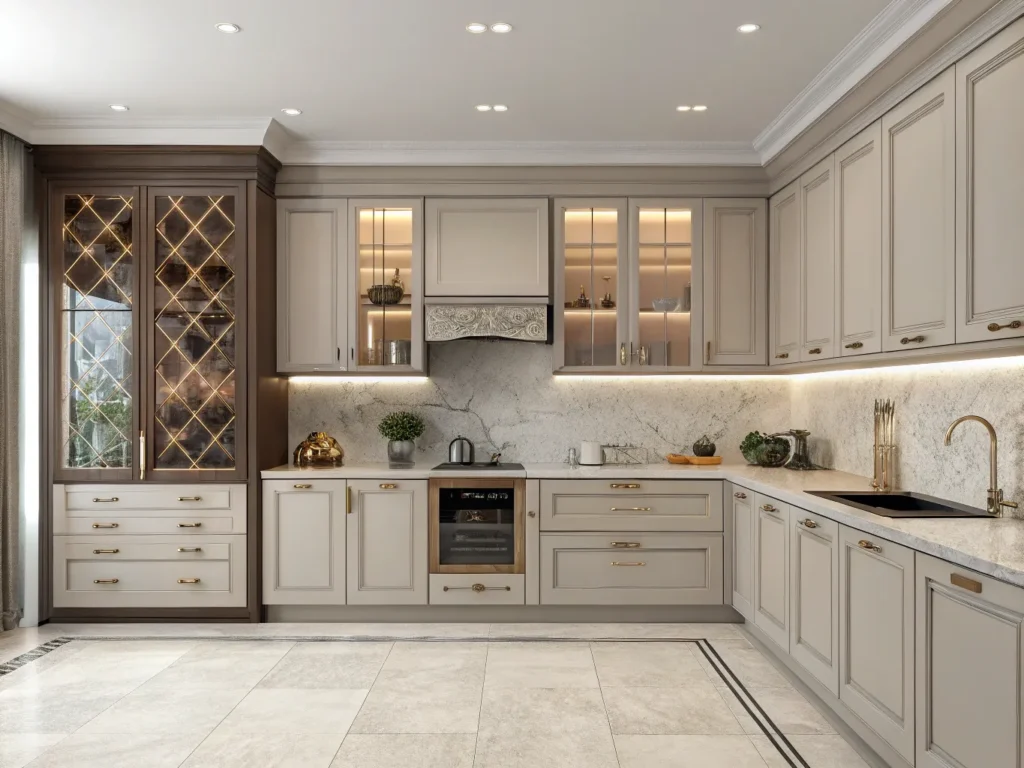
Let me start by saying this: I once paid $89 for a single cabinet pull because I saw it in a glossy magazine and thought it would “elevate the whole space.” Spoiler: it didn’t. It looked lonely next to my $4 knobs, and I returned it the next morning. (Still not over the restocking fee.)
So yeah, framed cabinets can be budget-friendly or bank-breaking, depending on how you play it. And I’ve played it both ways.
Real-World Price Ranges From My Receipts and Regrets
-
Stock framed cabinets (prebuilt, off-the-shelf
Around $120–$250 per cabinet box at big box stores like Home Depot or Lowe’s. These are great if you’re handy or can bribe a friend with pizza. -
Semi-custom framed cabinets (better materials, more sizing options):
Expect $300–$650 per cabinet, depending on finish and extras like soft-close drawers. -
Custom framed cabinets (made-to-order, fancy finishes):
These start around $700+ per cabinet and go all the way to “Why is my bathroom crying?”
I once got a quote for custom-framed uppers in walnut that totaled more than my first car. Beautiful, yes. Necessary? Not for me.
Where to Spend, Where to Save
Here’s what I’ve learned the hard way:
💰 WORTH IT:
-
Solid wood face frames, especially if you’ve got slam-happy kids
-
Full-extension drawer glides (trust me, digging around in a half-open drawer gets old fast)
-
Quality hinges, cheap ones, make doors droop faster than Monday mornings
✂️ SKIP OR DIY:
-
Decorative moldings, use budget trim and paint it to match
-
Designer hardware, there are amazing dupes on Amazon under $30
-
Glass inserts, unless you love showing off mismatched Tupperware
One trick I swear by? Mix high and low. My lower cabinets are solid wood semi-customs, but my uppers came straight off the clearance rack. Painted the same color? No one knows. (Except me. And now you.)
Can I Do Framed Cabinets on a Tight Budget?
Yes! Start with stock options, stick to a basic door style like shaker, and upgrade with DIY tweaks. Paint can work miracles. I’ve transformed $200 worth of cabinets with $30 hardware and $50 worth of paint, and it still makes me happy every time I walk into the kitchen.
A Step-by-Step Guide to Choosing Framed Cabinets That Fit Your Style and Budget
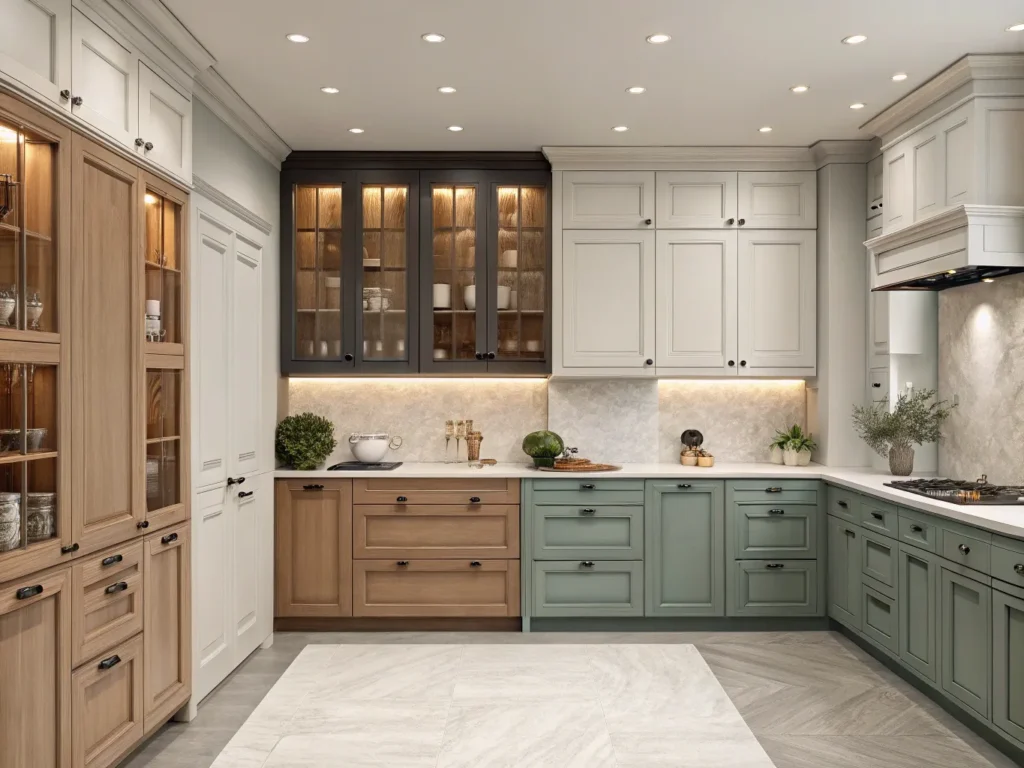
If I had a dollar for every time I changed my mind on cabinet styles, I could probably afford those dreamy inset walnut ones I saw on Pinterest. But real talk? Choosing framed cabinets doesn’t have to be overwhelming or expensive. You just need a plan and maybe a backup drill battery
Here’s how I do it, complete with shortcuts, mistakes I’ve made, and what I’d repeat.
Step 1: Start With How You Live
Before picking colors or door styles, ask:
-
Do you cook daily or microwave leftovers?
-
Do you have kids slamming doors or a cat climbing drawers?
-
Are you tidy, or is your “junk drawer” the whole kitchen?
Framed cabinets are sturdy and practical, but inset styles or fancy finishes might not match your chaos level (speaking from toddler-infested experience).
Step 2: Pick a Door Style That Forgives You
I’m a big fan of shaker doors. Why?
-
They’re classic.
-
They’re easy to wipe down.
-
And they hide a surprising amount of peanut butter smears.
Other options like raised panel or beadboard can be beautiful, but they tend to trap dust (and regret). Flat panels with full overlay give a more modern vibe without going full Euro-style.
Step 3: Measure Twice, Shop Thrice
Okay, here’s the real Maya method:
-
I measure everything (wrong the first time),
-
I obsess over paint chips,
-
I “test” finishes by holding cabinet doors in five different lights,
-
Then I impulse-buy something on clearance and make it work.
Joking (mostly). But really, take your time, compare styles, and bring home a door sample if you can. Lay it next to your floors, your counters, even your coffee machine. If it clashes with your coffee machine, you’ll notice.
Step 4: Know Where to Save vs. Splurge
Save on:
-
Upper cabinets (less wear and tear)
-
Interior accessories (you can add roll-outs later)
-
Paintable finishes
Splurge on:
-
Lower cabinet durability
-
Soft-close hardware
-
Anything you touch every day (like trash pull-outs or cutlery drawers)
And if you can only splurge in one place? Pick your most-used zone. For me, it was the cabinet next to the stove where I keep my spice chaos. It got the solid maple treatment while the pantry doors are… let’s just say “budget-friendly chic.”
What If I Regret My Choice?
You might. That’s okay. I regretted my first cabinet color (too yellow), my first hardware choice (too tiny), and the time I thought I could save money by skipping soft-close hinges. But cabinets are fixable. Paint exists. Hardware can be swapped. And honestly? Most people won’t notice unless you point it out.
Maintenance and Longevity: How Framed Cabinets Hold Up Over Time
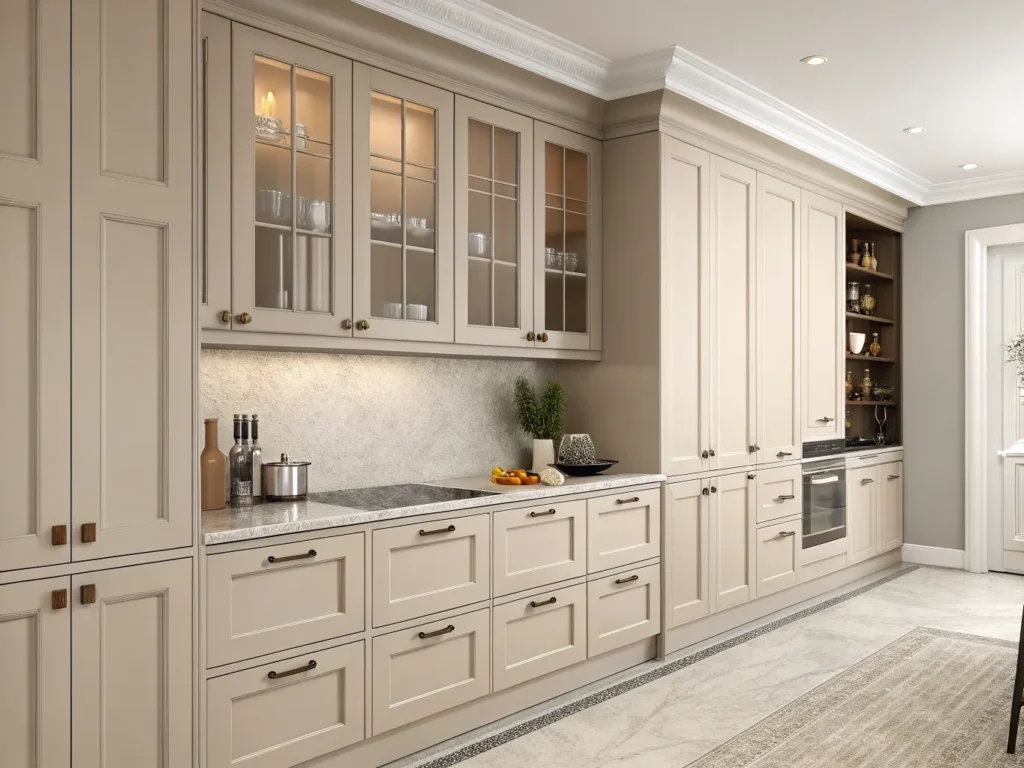
If you want the short version: my framed cabinets have outlasted two toddlers, one dishwasher flood, and countless “just lean on it, it’ll close” moments. They’re like the kitchen version of your favorite jeans, maybe a little worn in places, but they still fit and still do the job.
But here’s the real scoop on how they age, and what you’ll want to keep an eye on (preferably before your next dinner party).
They’re Tough… With a Few Quirks
Framed cabinets hold up well because the face frame adds structure. Less wobble. Less warping. I’ve had framed boxes stay square even when our floor shifted slightly during a renovation (the fridge wasn’t so lucky).
BUT…
-
Hinges may need the occasional tweak. Especially with inset doors. After a few years, I noticed one door started to rub on the frame. Quick screwdriver job, done. (If you’ve got a hex key drawer—this is when it earns its keep.)
-
Paint can chip at the corners. Especially if you’re like me and sometimes open drawers with your hip while holding a toddler and a plate of waffles. Solution: Keep a touch-up pen in your junk drawer. Bonus: makes you feel fancy.
-
Dust loves the inner corners. The frame edges and any decorative molding love to collect, well… life. I keep a tiny artist’s brush just for cleaning those grooves. It’s not glamorous, but it works.
Real-Life Longevity Test
My neighbor Sarah redid her kitchen five years before I did, with white framed shaker cabinets, semi-gloss paint, and soft-close hinges. I visited last week. They still look great. A little shine rubbed off near the trash pull-out, but otherwise? Zero regrets. She said she’d pick the same setup again (and this is a woman who second-guesses throw pillows, so that’s saying something).
Do Framed Cabinets Last Longer Than Frameless?
Not necessarily. It depends more on the materials and the care than on the construction. But framed cabinets are often more forgiving when things go wrong, like warping or small alignment shifts. That face frame? It’s like built-in insurance.
Should You Choose Framed Cabinets? My Final Take
Here’s what I wish someone had told me when I started looking at cabinets: there’s no perfect choice, just what works best for your kitchen, your life, and your slightly lopsided floorboards.
Framed cabinets aren’t trendy. They’re not flashy. They’re the solid, dependable best friend of kitchen design. They show up. They hold your mixing bowls. They survive spaghetti sauce splatters and door slams and those “just shove it in and close it” moments we all pretend don’t happen.
Are they right for everyone? Maybe not. But if you like that sweet combo of structure + charm, if you want something that forgives your measuring errors and doesn’t mind if your walls aren’t perfectly square, then yes. Framed cabinets might just be your thing.
My kitchen’s not showroom-perfect. But it’s mine. It smells like coffee in the morning and chaos at dinnertime. And those framed cabinets? They hold the rhythm of it all.
Hope this helped you feel like you were hanging out with a friend who’s been through it.
Got questions? Curious about colors or hardware? Just let me know, happy to share what worked (and what didn’t).

